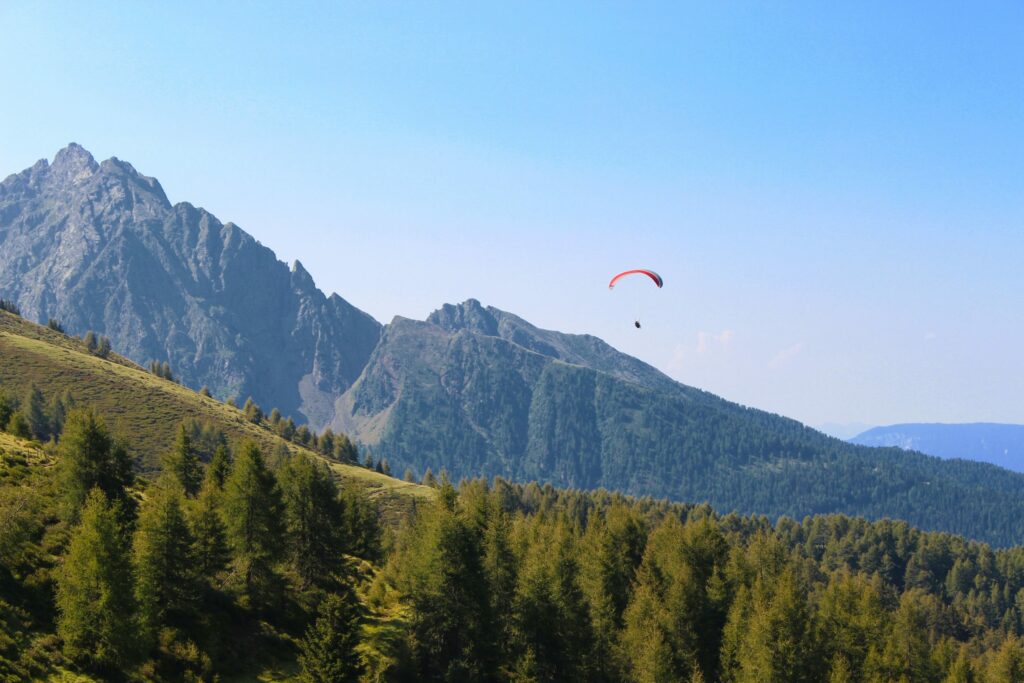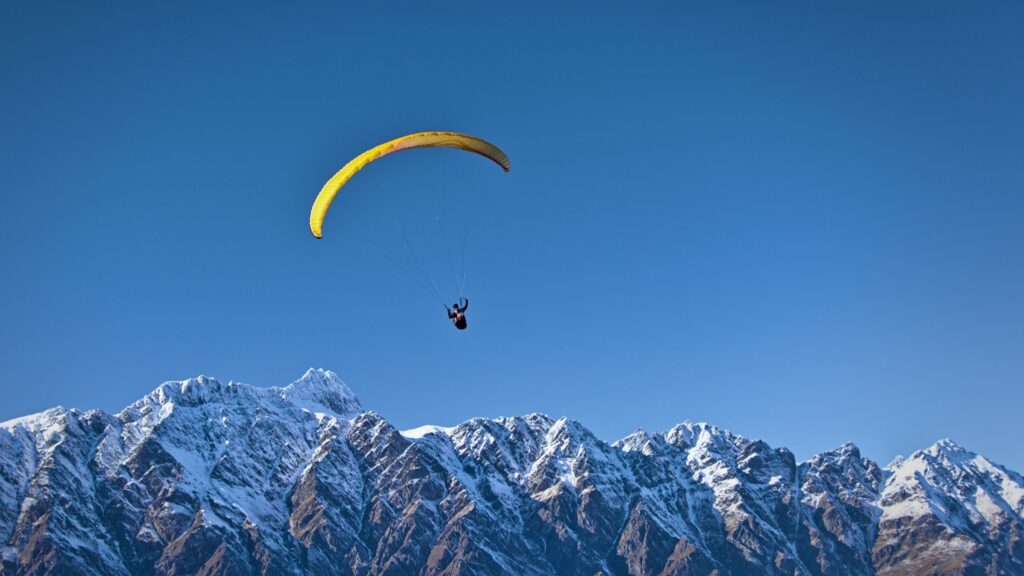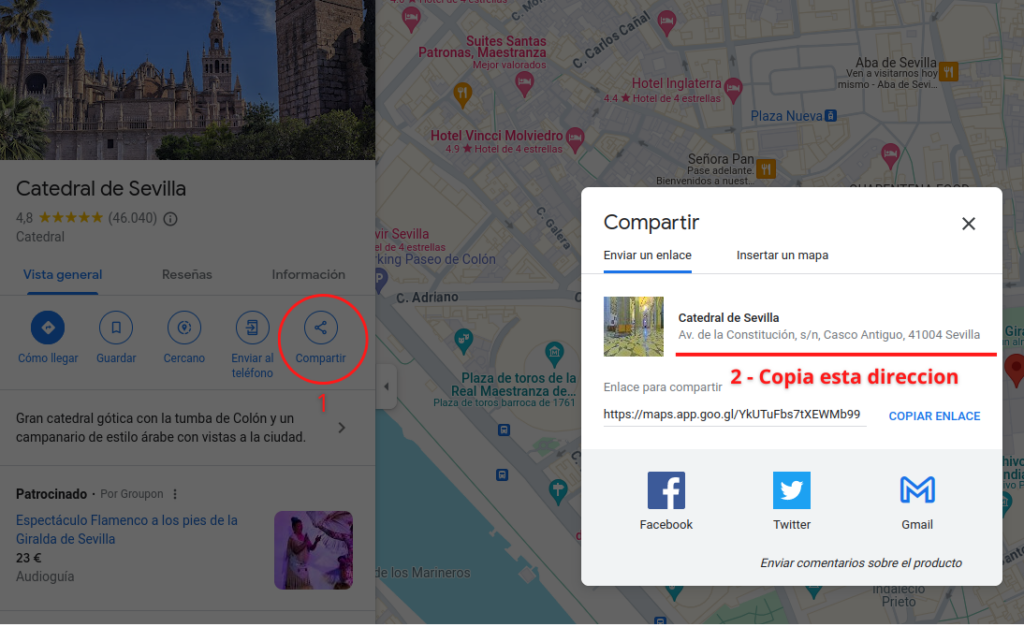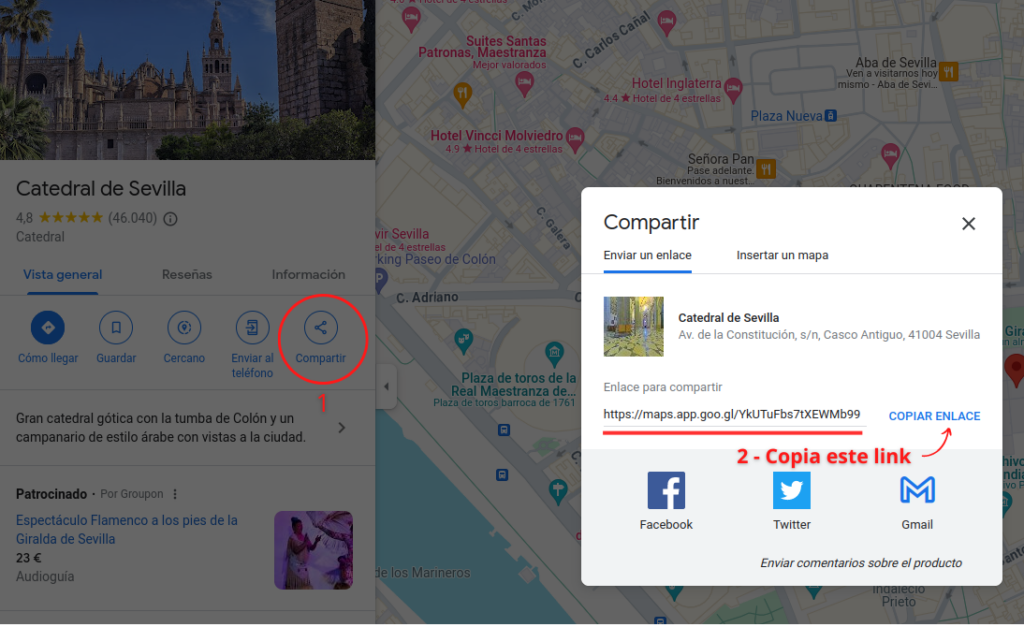Flying is synonymous with freedom and liberty, our most precious asset. Paragliding is an activity and a sport that, according to experts, is the closest thing to feeling like a bird with its wings spread in infinite space.
Paragliding is a recreational activity that attracts men and women of all ages. Regardless of your profession or general hobbies, or your origin. In the interest in paragliding as a recreational activity, the intrinsically human desire to fly takes precedence. And that equals us beyond our daily work on dry land. Who can spend an entire life indifferent to looking at the sky without awakening within him the desire to float in it? It is a passion that captures us and that, thanks to paragliding, we can make a reality.
Table of Contents
ToggleHistory and origins
Where does the word paragliding come from?
The word paragliding derives from French as an acronym for “parachute” which means parachute. Hence “para” and “pente” (slope), because in the history of this activity there were some mountaineers who devised something like that to fly down from the peaks they conquered. This fact was attributed as the initial milestone of paragliding at the end of the 20th century, however, its origins go back a long time.

The first parachute in history
The genius of Leonardo Da Vinci In the middle of the 15th century he made a detailed study of the flight of birds, in order to invent flying machines. The parachute, precursor to the paraglider, was Da Vinci's simplest design. One of his masterpieces, the ornithopter, worked similarly to today's hang glider. The method of navigating the skies with the help of air currents and thermodynamics continued to be the subject of study.
Who invented paragliding?
Although the invention of the paraglider as we know it today is attributed to a single person, the reality is that there were several people who participated in this creation process. It is important to know the complete story if we do not want to overlook many of the keys that currently allow us to fulfill our dream of flying.
In 1898, the Brazilian Santos Dumont made the first balloon ascension in Paris. Later they ventured into flight mechanisms The Wright brothers. In 1922, Reinhold Platz built an aerodynamic flying craft with a rigid fabric sail. That constitutes the first documented version of a lightweight, functional glider.
Parachutes were used as military supplies during the First World War. But in 1931, the Komsomol Communist Youth Union took control of the USSR air fleet. He turned skydiving into a popular sport and one of the favorite activities of young people. Postage stamps from the USSR from 1936 show this.
Later, in the 50s, Francis Rogallo developed a flying device with a rigid structure with flexible wings. Two years later, in 1952, Domina Jalbert created the "parafoil", a parachute with controllable glide. It was at this time that the pilot and chronicler Walter Neumark assured that it would not be long before pilots would be able to fly on their own.
In 1961, French engineer Pierre Lemoigne made improved parachutes that allowed them to be directed and controlled. During those years -decade of the 60s-, David Barish is credited with being the inventor of the paraglider. However, as we have been realizing, it already had several centuries of experimentation and history. Credit to Barish is due to his involvement with NASA where he developed what he called a “navigation wing,” whose goal was to recover space capsules. Its creation was based on Domina Jalbert's previous invention and was tested by David himself in 1965.
The climbers who de-escalated by flying
At the same time that Barish was spreading his wings, in the French Alps, paragliding was born as an acronym for parachute. Climbers with much less science but the same ingenuity began to use more rudimentary devices. But they responded to the same logic and technology to launch themselves from the mountains. Their new paragliders gradually lowered one meter in height for every meter traveled at a speed of 20 kilometers per hour.
The 70s. Peace, love and free flight
In 1968, Rogallo's kites, with wire mesh wings and inflatable tubes, evolved into square parachutes with cells blown by the wind as they descended. The flying machines that Da Vinci had dreamed of five hundred years earlier were revolutionizing the skies. In Australia, the first fliers with flexible wings were towed with boats. On the Californian coast the first hang gliders overshadowed surfers. Meanwhile, young parachutists were flying from the hills of eastern Montana.
Starting in 1978 we experienced the paragliding boom. The spontaneous and fun practice began to become a true sport practiced all over the world. People attracted to this form of air travel wanted to maximize the power of their flights. The design of paragliders evolved to a more aerodynamic profile with a less porous fabric. The new designs were coupled with the different techniques to pilot them.
In 1986, paragliding had spread in Europe and more and more followers were emerging. To meet demand, factories that focused their attention on paragliders increased. Increasingly stable that will guarantee confidence and security for activity lovers. Later, manufacturing diversified according to its use. Different wing and canopy designs depending on whether they were intended for professional, intermediate or competition pilots.
Where is paragliding practiced?
Paragliding can be practiced anywhere in the world. All you need is a mountain that offers a slight slope from which to take off. An open area in which to land and most importantly, a natural landscape to enjoy during the flight. The flight area is one of the factors that is most taken into account when choosing a paragliding flight.
Normally paragliding centers that fly in the same region share the flight areas. And they use those that not only offer the best views but also the best flight conditions. Safety is the most important thing which takes into account recreational paragliding centers. Both to choose the time to choose and the flight zone or the time at which you will fly. That is why, when booking a paragliding flight, the place and time are finalized between 24-48 hours before the activity. When the forecasts begin to be more accurate.
At Everent we have a wide range of Paragliding flights throughout Spain. Enter our search engine to book your flight experience and live an adventure!
How much does a paragliding flight cost in Spain?
If you are going to start paragliding, your first taste of flying or tandem flying is the ideal experience to get started in this sport. The price of a recreational paragliding flight always depends on the area and duration of the flight. The average price of a paragliding flight in Spain is 80 euros for flights between 15 and 30 minutes duration in the air.
Recording the experience is something you should consider, including it in the excursion will be a great way to relive this magnificent experience in the air, over and over again, seeing yourself again in mid-flight. In certain cases the photo + video report It is included in the same price of the flight, but in most cases it involves an additional cost of between 15 and 30 euros. The price normally includes the USB that is given to you at the end of the flight and contains the complete report.
If after having had your first paragliding experience, you would like to continue delving deeper into this sport and learn to fly autonomously, you can choose to take a paragliding course. In Spain the price of paragliding initiation courses they start from 300 euros. It may be expensive at first, but once you have your license and equipment, you just have to choose the place you want to fly from and get there.
To be an autonomous paraglider you will need to buy a complete team to fly which can cost around 3000 euros new, or less than 1500 if second-hand. We recommend that before looking for where to buy paragliding equipment, you consult directly with the Paragliding center with which you have trained. They usually have offers and promotions with great discounts for the students of the center itself.

Who can paraglide?
Paragliding as a recreational sport is suitable for all types of audiences. You do not need to have a specific physical build or training to paraglide since you will only need to run a few steps to take off.
More and more centers in Spain have systems that allow us to carry out what we call adapted flights. Adapted flights are designed for those people who suffer from some type of disability that a priori would not allow them to either take or enjoy the flight.
In this sense, paragliding has advanced a lot in recent years and currently anyone can fulfill their dream of flying.
What is the maximum weight to fly a paraglider?
El maximum weight to fly paragliding accompanied by an instructor is between 110 and 130 kg. All paragliding flight equipment has a maximum permitted weight that is established by the manufacturer and is normally 240 kg. This step includes not only the weight of the people flying, but also of all the elements contained in the paragliding flight equipment.
El minimum weight to paraglide it is 25kg. If the passenger weighs less than 45 kg, the pilot must change, if he so wishes, the usual paraglider for another with a smaller sail.
What is the minimum age to paraglide?
The minimum age to paraglide as a passenger in Spain is 6 years. Minors must present, without exception, the authorization of both parents, or legal guardian in their absence, to be allowed to fly.
To fly autonomously the minimum age is 14 or 16 years old, depending on the country you are in. In the case of Spain, from the age of 14 you can begin training and take introductory paragliding courses.
With regards to maximum age, there is no established age limit. The record for coming of age so far is held by Yu Te-Hsin, who paraglided over the lands of Humtou (China) at the age of 105. There are even people who have started paragliding when they are over 70 years old.
What should I know before paragliding?
To start the activity it is advisable to do so with baptism of flight in a two-seater or tandem paraglider and always with the help of a professional pilot. Flight baptisms generally last between 15 and 30 minutes, depending on atmospheric conditions and what the different flight areas allow.
To make this flight it is It is necessary to have a pilot with qualifications and license to fly two-seater. This way we will be guaranteed to take off, fly and land with total confidence, that our flight will be worry-free and completely pleasant. The Spanish Aeronautical Federation requires that pilots have this license and associated insurance for pilot and passenger.
After the first flight, many people discover the magic of paragliding and feel the need to learn to do it themselves. To fly autonomously it is necessary to take a course paragliding The paragliding course contains both a practical and theoretical part and lasts around of 10 days. The paragliding school we will choose must be a qualified institution.
Most popular paragliding areas have schools registered with national federations and have the appropriate training equipment to lend to students during the course. Before accessing an initiation course that lasts around 10 days it is important to verify the school's certification and the status and approval of the equipment that will be used. After the initiation course you will be able to take off and land alone.
Recommendations for your first two-seater flight
If you are about to take your first paragliding flight, you may have some last minute doubts. Here we leave you some small recommendations so that you can enjoy your first flight experience to the fullest:
- You must be at the appointment location to start the flight well in advance. The meeting point may vary according to weather conditions. You have to be attentive. It is recommended to go with warm clothing and trekking boots, gloves will also be very good on cold days.
- Before launching, you must listen to a brief class to learn and understand the basics of how the paraglider works. The professionals will explain rules and the components used during the flight: the sail, a harness, a parachute and a helmet. All this should be checked before starting.
- Once in the air, the pilot will visually recognize the area and show you where you are flying and you will float and enjoy looking at the landscape from another perspective, letting yourself be carried away by the skies. Time will truly fly by and when you remember, you will be receiving the necessary instructions for a perfect landing.
What are the best weather conditions for paragliding?
To practice paragliding in Spain you need adequate weather conditions. The best time to practice this sport is in spring or fall, when temperatures are more pleasant and there is less wind.
Spain is a country with a very variable climate, but in general, it has good conditions for paragliding. In mountainous areas, such as the Pyrenees and the Andes, the best time to fly is from June to September, since there are more thermals and less winds. In coastal areas, such as the Costa Brava and the Costa del Sol, the best conditions occur in spring and autumn, as the winds are more stable.
Recreational paragliding flights (tandem flights) in Spain are carried out only in optimal weather conditions to guarantee maximum flight safety. When you book a paragliding experience, between 24 and 48 hours before the day of flight you will receive final confirmation of the flight, its schedule and the flight area. This is because the closer we are to the time of flight, the more accurate the weather forecasts will be.
How many meters does a paraglider go up?
Paragliders normally perform flights of one maximum height of between 3500 and 4000 meters above ground level. However, there is no set limit. The record of highest paragliding flight in the world The Frenchman Antoine Girard has it and reaches the 8.175 meters on a flight he made in the mountains of Pakistan.

What is needed to practice paragliding?
To practice paragliding you need complete flight equipment that contains the following elements:
- Paragliding: a self-inflating lightweight fabric structure similar to a parachute but more elongated. With a more complex structure formed by several cells open at one end. Which allows them to fill with air and the structure to maintain an aerodynamic shape to enable lift in the air. The paraglider is attached by thin ropes of highly resistant material to a harness. In which the pilot sits with a control in each hand that allows him to vary the flight path.
- Harness or chair: It is where we sit during the flight. It is the union between a harness and a comfortable seat. At the time of takeoff and landing it allows us to stand up and during the flight, remain seated. The chair has dorsal protections and in the two-seater, the pilot's seat is different to allow the passenger to go in front.
- Helmet: it must comply with the EN966 standard, it will protect us above all and just in case when landing.
- emergency parachute: last resort available to the pilot in case things go too bad. It is the least used part of the equipment in the history of paragliding but it must be carried. All pilots receive training in its use and practice regularly.
- Various electronic instruments: variometer, GPS, and radio equipment since the flight requires being connected at all times with other pilots and with the base.
The weight of all the equipment is usually around 15-20 kg, although there are mountain equipment that weighs less than 5 kg. A two-seater team for tandem flight can increase up to 30 kg. Having good equipment when purchasing it will make the difference between a long flying career or not wanting to take the paraglider out of the bag again.
Is it safe to paraglide?
Is it safe to paraglide? The answer to this question is perhaps a little surprising: yes, it is safe to paraglide. In fact, it is one of the safest sports that exist. According to data from the International Olympic Committee, paragliding is one of the sports with the fewest fatal accidents, with only 0,013% mortality.
Compared to other sports, this is extremely low. For example, downhill skiing has a mortality rate of 0,24%, while surfing has a mortality rate of 0,34%. Of course, this does not mean that paragliding is completely safe. Like any other sport, there is some risk involved. However, if practiced carefully and safety rules are followed, the risk of an accident is minimal.
The two-seater paragliders used in Spain for recreational flights are also approved and prepared to face extreme conditions. Safety is always a priority in the manufacturing and design of any paraglider model.
So if you are looking for an extremely exciting but relatively safe sport, paragliding is a great option. Just make sure you practice carefully and follow all safety rules.


